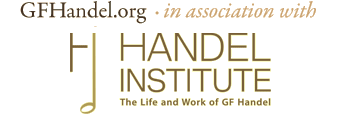Emma Matthews, who started her career in Perth
(Western Australia) as Emma Lysons, is now one of the brightest stars in the
southern operatic skies. She has appeared with Opera Australia in many
lyric soprano roles, including Ilia in Idomeneo, Hero in Béatrice
et Bénédict, Olympia in Les Contes d’Hoffmann, Zwaante in the
2001 Australian opera Batavia, and scored a spectacular success in
the Sydney Festival’s Mitridate earlier this year. In her first
recording, she concentrates on Handel heroines, including Morgana and
Almirena, whom she has portrayed on stage, and Cleopatra, which seems to be
a new assumption with this disc.
The somewhat unexpected involvement of a New
Zealand band has come about following Matthews’ tour of that country with
the New Zealand Chamber Orchestra, an “independently managed division” of
the New Zealand Symphony Orchestra. They cover the same wide repertorial
range as Matthews, from baroque to modern, using modern instruments, other
than a harpsichord and a viola da gamba in the Sinfonia-V’adoro pupille
section. Nevertheless, their Handelian sensibilities here are impeccable,
with well-chosen tempi and virtually vibrato-free strings.
Matthews’ voice is to a large extent the
sort of voice one expects in this repertoire, pure and flexible, but with
rather more colours than is often the case with someone who can hit a high F
with ease (and while holding Indian dance-type postures, as she did in
Mitridate).
While Handel might be obvious territory,
Cleopatra’s arias in particular are a brave choice, bringing as they do
inevitable comparison with all those preceding divas who have recorded
them; one can start with Sutherland, and move along through Seefried, Popp,
Caballe, Auger, Masterson and on to Sills, and of course compatriot Yvonne
Kenny. Matthews stands up well to the comparison in most cases, getting
into her conception of Cleopatra as a “sensuous, mischievous and demanding
woman” (liner notes). 'Tornami a vagheggiar' is also much associated with
Dame Joan, and it is an interesting comparison. At times Matthews’ diction
sounds a little suspect, but listening closely suggests it is just the
letter “t” of which she has an idiosyncratic pronunciation, rather like Ewa
Podles’s lisp which no one ever mentions. Perhaps most rewarding are the
arias from Rinaldo, a role with which Matthews is thoroughly
conversant. In all cases however it can be said that Matthews brings her
own interpretations to bear, with appropriate and individual ornamentations.
There are three complaints one might make.
Firstly, the recording is very short, at 45.49 minutes. Secondly, some of
those precious minutes are taken up with instrumental playing. This is
something of a tradition with Australian vocal baroque CDs, and not a
particularly welcome one; similar things happen with the Australian
Brandenburg Orchestra’s CDs with Graham Pushee, Yvonne Kenny and Andreas
Scholl. Thirdly, the repertoire is, obviously, chosen from within the
realms of extreme familiarity. Given that some forty Handel operas survive,
there are a lot of wonderful and less familiar arias out there for singers
to choose from, many of them just as delightful or moving as 'Tornami a
vaghegiar' or 'Piangero'.
None of these
grizzles however detract from the musical performances on offer, and while
recorded Handel aria recitals are becoming as plentiful as Mozart Requiems
or Tchaikovsky symphonies, this one is worth acquiring and treasuring.




